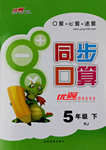题目内容
The telephone rang in the police station at Richmond, California , USA.
“Police station? A train for Santa Fe hit a truck at the McDonald Street Crossing.Please ________ there at once.With an ambulance, too.A man is badly _________.” said an anxious voice of a young woman.“ And you know I am the ….”
“Please wait! Hi! Hi!” the policeman kept on ________ though the line was cut off.Within a minute , a police car and an ambulance car started off.Before long they got to the crossing, but they _______everything was fine.No accident, no wounded man.
“What a dirty trick!” said the policeman _______.“We must find out that bad________ and …..”They were just talking about the ________when they heard the whistle of a train which was nearing them quickly.All of a sudden, a truck appeared.It came _______towards them, too.When the truck was passing the crossing, it suddenly _______ to move on.Right then and there, before the eyes of all the policemen _________, the train hit the truck heavily and _______it dozens of meters away.
When Randolph Bruce, the driver, was ________ out of the damaged truck, he was seriously wounded just as the young woman had told on the phone.As he was taken to the _________ in time, his life was saved.
Later the police did whatever they could to _______the man who had telephoned them.It turned out that the young man was a very excellent police officer working far in the neighboring state, who had got the first-hand _______ of this crime as described above.
1.A.call B.come C. go D.notice
2.A.beaten B.treated C. needed D.injured
3.A.talking B.laughing C. crying D.shouting
4.A..realized B.found C. proved D.wondered
5.A.nervously B.disappointedly C. angrily D.surprisingly
6.A.man B.woman C. child D.driver
7.A.trial B.warning C. program D.punishment
8.A.passing B.turning C. running D.rolling
9.A.refused B.stopped C. continued D.began
10.A.above B.below C. alive D.present
11.A.struck B.met C. caught D.missed
12.A.pushed B.helped C. let D.asked
13.A.company B.house C. station D.hospital
14.A.meet B.punish C. find D.arrest
15.A.information B.result C. advice D.news
1.C
2.D
3.D
4.B
5.C
6.B
7.D
8.C
9.A
10.D
11.A
12.B
13.D
14.C
15.A
【解析】
试题分析:本文讲述的是一个关于预言与事实巧合的故事:一天警察局接到一个女士的报警电话说在一个铁路和公路的交叉路口发生了交通事故。一辆货车与火车相撞,有一个人受了重伤,要求警察带救护车去救援,当警察和救护车赶到报案人所说的事故地点时,他们看到那里一切正常,并没有事故发生。当警察们正为有人报假案而生气,发誓要查出报案人时,与报案人所说的相似的事故发生了……
1.
2.With an ambulance可以推断出有人受伤,故选择D,意为受伤的。选项A意为被击败;选项B意为被处理;选项C意为被需要。
3.“Please wait! Hi! Hi!”可知警察接到报警电话后很焦急,以及下文though the line was cut off可知警察在电话挂断后还在叫,故选择D。意为:大声吼叫。选项A意为讨论;选项B意为嘲笑;选项C意为哭。根据语意,选择D。
4.
5.What a dirty trick可知,警察认为这是恶作剧,他们认为自己被耍了,所以此时应该是很生气。选项A意为紧张地;选项B意为失望地;选项C意为生气地;选项D意为令人惊叹地。根据语意选择C。
6.said an anxious voice of a young woman可知报警人为女性。故选择B。
7.
8.All of a sudden, a truck appeared.以及报案人对于事件发生地的描述,可知卡车是往十字路口方向开,也就是警察所站的地方。因此,这辆卡车应该是往警察们这儿开过来。选项A意为经过;选项B意为转弯;选项C意为跑动,驶过来;选项D意为翻滚。根据语意,选择C。
9.A train for Santa Fe hit a truck at the McDonald Street Crossing可知车祸就在十字路口发生,也就表示当卡车经过路口时,应该停了下来。选择A意为拒绝做某事,短语为refuse to do sth.;选项B意为停止,短语stop to do,意为停下来去做某事,和后面的move on搭配起来就表示继续开;选项C意为继续;选项D意为开始做某事。根据语意,选择A。
10.
11.
12.out of the damaged truck, he was seriously wounded可知卡车受损严重,以及他受伤严重,所以他只有在别人的帮忙下才可以从卡车里出来。选项A意为拉,而在车祸中受伤的人是不可以直接拉的;选项B意为帮助;选项C意为让;选项D意为要求。故选择B。
13.his life was saved以及上文与警车同去的救护车可知,这名男子应该是被送到了医院,故选择D,意为医院。
14.
15.

 优翼小帮手同步口算系列答案
优翼小帮手同步口算系列答案摘录信息 (共10小题;每小题1分,满分10分)阅读下列短文,根据所读内容在文后小题的空格里填上适当的单词或短语,并将答案转写在答卷上。注意每空不超过三个单词。
Colors can affect our feelings. Generally, they can be divided into four kinds. They are calm colors, warm colors, energetic colors and strong colors.
Calm colors Some colors make us feel calm and peaceful. Blue is one of those colors. Blue can also represent sadness, so you may say “I’m feeling blue” when you are feeling sad. White is another calm color. It makes you feel calm and peaceful.
Warm colors Some colors can give you a happy and satisfied feeling. Colors like orange or yellow belong to these. Orange represent joy. It can bring you success and cheer you up when you’re feeling sad. Yellow is the color of the sun and wisdom, too.
Energetic colors When you feel tired or weak, you should wear energetic colors, such as green. Green can give you energy as it is the color of nature and represent new life and growth.
Strong colors Anyone who needs physical or mental(精神的) strength should wear red clothes. Red is the color of heat and represent power and strong feelings.
1. : Colors and 2.
3.__________ | Feelings | 4.__________ |
calm colors | calm and peaceful | 5.__________ |
white | ||
warm colors | 6.__________ | orange |
7. | ||
8. colors | energetic | 9.__________ |
strong colors | 10.__________ | red |